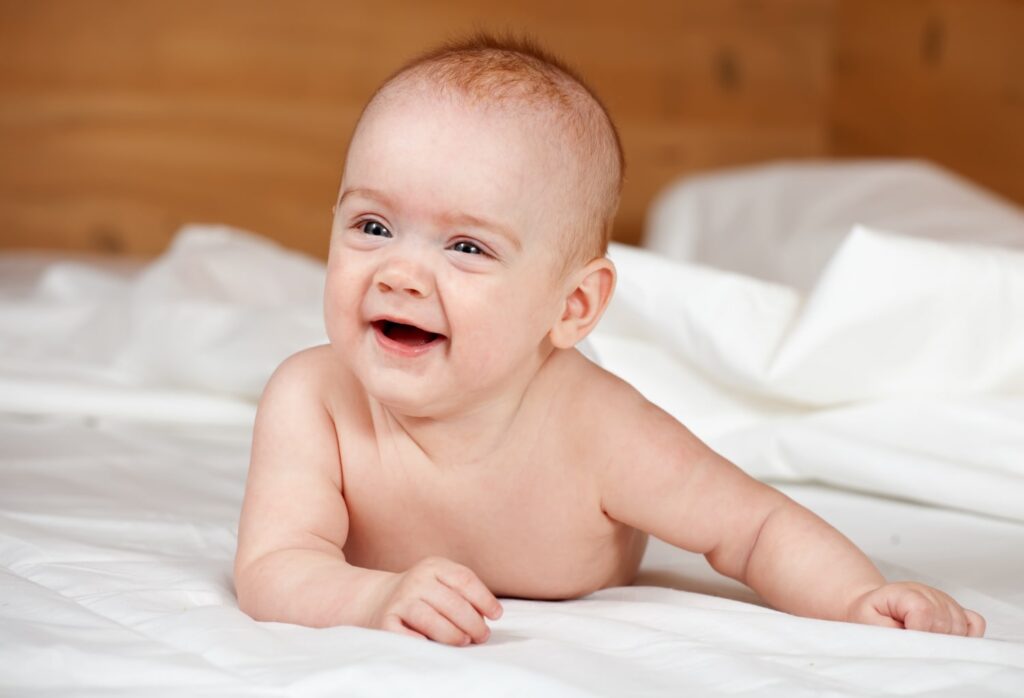Welcoming your newborn into the world is a beautiful experience, and by time you’ll notice incredible changes in your 2 Months Old Baby. Your little one is growing rapidly, developing new skills, and becoming more interactive with the world around them. As parents, it’s natural to track these developmental milestones, but it’s important to remember that every baby grows at their own pace.
During these early months, your baby is adjusting to life outside the womb, learning to move their tiny body, recognize faces, and communicate in their own adorable ways. Below, we explore the key developmental milestones for a 2 months old baby.
Physical Development Milestones
By two months, your baby is becoming more active and gaining better control of their movements. Here are some physical changes to look for:
- Improved Head Control: Your baby can hold their head up for a few seconds during tummy time.
- Increased Arm and Leg Movements: More coordinated, smooth movements, including little kicks and stretches.
- Grasping Reflex: Your baby may unclench their fists more often and even start reaching for objects.
- Drooling Begins: The salivary glands are becoming more active, though teething won’t start for another couple of months.
Sensory Development Milestones of 2 Months Old Baby
Your baby’s senses are sharpening every day, helping them engage with their surroundings:
- Hearing Improvements: Your baby recognizes familiar voices, especially parents, and may turn their head toward sounds.
- Vision Enhancements: They can focus on objects about 12 inches away and respond to bright colors and high-contrast patterns.
- Sense of Touch: Your baby finds comfort in being held, cuddled, and rocked.
- Exploration Through Mouth: Babies at this stage may begin to suck on their hands or toys as a way of discovering textures.
Cognitive Development Milestones
Your 2 months old baby is learning more about their world every day. Cognitive development includes:
- Recognizing Faces: Your baby may respond to familiar faces with excitement or calmness.
- Smiling Responsively: Social smiles begin to appear, showing emotional bonding.
- Boredom Cues: Your baby may fuss if left alone for too long, indicating a need for engagement.
- Exploring Objects: They may stare at and track moving objects with their eyes.
2 Months Old Baby’s Speech and Communication Milestones
Though words are still a long way off, your baby is learning the basics of communication:
- Cooing Sounds: Expect to hear adorable “oohs” and “ahhs.”
- Watching Lips Move: Your baby observes your mouth as you speak, trying to understand speech patterns.
- Responding to Voices: Your little one may smile, wiggle, or react to familiar sounds.
- Facial Expressions: Babies start using their faces to express happiness, curiosity, or discomfort.
Social and Emotional Milestones
At two months, your baby is starting to build emotional connections with you and others:
- Smiling in Response: They recognize caregivers and react with smiles.
- Turning Toward Voices: A sign of early communication and social development.
- Comfort Seeking: Your baby finds security in familiar voices, touch, and routines.
Brain Development Milestones
Your two months old baby’s brain is growing quickly, processing new experiences and stimuli:
- Improved Focus: Babies can follow objects with their eyes more smoothly.
- Curiosity Peaks: They start responding to new sights and sounds with excitement.
- Recognizing Patterns: Babies begin to anticipate feeding and sleeping routines.
Feeding and Nutrition Milestones
Proper nutrition is crucial for your 2 months old baby’s rapid development:
- Regular Feeding Routine: Babies typically feed every 2-4 hours.
- Improved Sucking Reflex: Stronger feeding skills make nursing or bottle-feeding more efficient.
- Recognizing Hunger and Fullness: Babies may root when hungry or turn away when full.
When to Seek Medical Advice
Each baby develops differently, but if you notice the following, consider consulting a pediatrician:
- No response to loud noises
- No eye contact or focus on faces
- Stiff or overly floppy body movements
- Lack of social smiles by three months
- Difficulty feeding or poor weight gain
How to Support Your 2 Month Old Baby’s Development
To encourage your 2 months old baby’s growth and milestones:
- Engage in Tummy Time : Helps build neck and upper body strength.
- Talk and Sing Regularly : Helps language and social development.
- Provide High-Contrast Toys : Stimulates visual growth.
- Establish a Routine : Helps babies feel safe and secure.
- Cuddle and Comfort : Strengthens emotional bonds.
FAQs
1. How much should a 2 months old baby sleep?
A 2-month-old typically sleeps 14-17 hours a day, including naps. Some babies may begin sleeping for longer stretches at night, but waking up for feedings is still common.
2. What types of toys are best for a 2 months old baby?
Soft toys, black-and-white contrast cards, and gentle rattles are ideal. These stimulate visual and motor development.
3. Why is tummy time important for a 2 months old baby?
Tummy time strengthens neck, shoulder, and upper body muscles, which helps with rolling over and crawling in later months. It also prevents flat spots on the head.
Conclusion
Your baby’s journey at two months is full of exciting milestones. From coos and smiles to recognizing faces and responding to sounds, each development marks a step toward growth. While every baby progresses at their own pace, your love, interaction, and care play a crucial role in their development. Cherish these early months, celebrate the small victories, and remember that your baby is learning and growing every single day.
References :
Your baby in the first 2 months: NHS inform
Tummy Time; Nemours KidsHealth
Also Read :
1 Month Old Baby Milestones : Embracing Every Precious Moment



